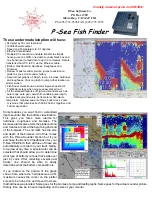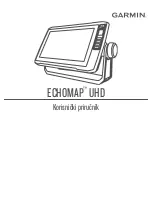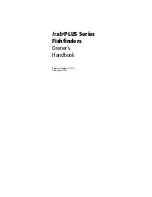
113
memory. Routes are often used when frequently traveling between two or more
locations because it is a faster and more accurate method than repeatedly
selecting individual waypoints each time one travels through the same area.
Routes consist of a Start Waypoint, an End Waypoint, and a series of waypoints
in between. Users can begin navigation at the beginning, the end (to run the route
in reverse) or at any waypoint in between. See
Waypoint
.
SD:
SD is an acronym for Secure Digital. An SD card is virtually identical in
function to an MMC; however, the speed at which information can be accessed is
generally faster, the storage capacity is generally larger, and the card has security
features which can be used to prevent extracting the data from the card. SD is the
same format that many digital cameras use. See
MMC
.
Selective Availability:
Selective Availability (SA) is a GPS system “feature” that
can be implemented by the U.S. Department of Defense (DoD) to degrade the
accuracy of GPS positioning information. With SA active, the GPS is accurate to
within 100 meters 95% of the time. With SA inactive, the GPS is accurate to within
45 meters 95% of the time. Currently, SA is inactive and the consumer can enjoy
the greater precision GPS provides; however, the DoD reserves the right to activate
SA at any time.
Speed Over Ground (SOG):
Speed Over Ground is the measurement of the boat’s
progress across a given distance, and is the speed measurement provided by GPS.
An alternate, Speed Through Water, is provided by a speed paddlewheel, and is
the measurement of the flow past the boat, which may vary depending on current
speed and direction. Speed Over Ground is optimal for navigation because
accurate destination times can be derived from this measurement. Humminbird®
products allow for input and display of both speed measurements.
Time To Go (TTG):
Time To Go is the estimated time required to reach the destination
waypoint. TTG is calculated using the SOG and DTG. See
SOG
and
DTG.
Track:
A Track is a series of saved points that define the past path of the boat.
These Track Points are saved at regular time intervals. Tracks are a useful and quick
method to see where you’ve been, and an easy guide to follow to get you back to
the starting point. Generally, all GPS units have a limited number of Track Points
that can be saved before the unit runs out of memory and begins erasing the first
Summary of Contents for 500 SERIES 580
Page 123: ...116 Notes ...
Page 124: ...117 Notes ...
Page 125: ...118 Notes ...
Page 126: ...119 Notes ...
Page 127: ...120 Notes ...
Page 128: ...121 Notes ...
Page 129: ...122 Notes ...
Page 130: ...123 Notes ...
Page 131: ...124 Notes ...
Page 132: ...125 Notes ...
Page 133: ...126 Notes ...
































